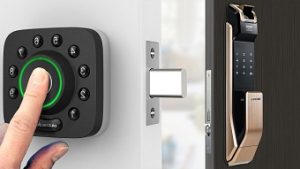
A new white paper from Parks Associates, entitled “Simplifying the IoT Edge: Smart Spaces Best Practices”, addresses the demand, growth, and new business opportunities in IoT edge solutions in apartments and MDUs, retail and warehousing, and hospitality and building management. An interesting finding from the paper shows that although most door locks in the US are currently mechanical, the market trend is towards conversion to smart locks.
The research, developed in partnership with Passivebolt, highlights the rise in demand for secured smart spaces, the growing ecosystem of competitors, and the need for manufacturers to develop partnerships with suppliers who can help them adapt quickly to new opportunities.
“The majority of residential door locks installed in the US are mechanical, but an increasing number of exterior locks are being replaced with smart door locks,” said Jennifer Kent, Vice President, Research, Parks Associates. “As connectivity becomes a de facto requirement to stay competitive, value creation moves to new sets of features and applications. Manufacturers must engage in constant innovation and explore new strategies to take products to market quickly.”
The whitepaper reveals that smart door locks and associated whole-building access control systems have fuelled the recent acceleration in smart apartment adoption—15% of multi-dwelling unit (MDU) owners/operators report having a secure access system in common areas that include IoT devices they can access and control remotely. A similar percentage have connected access solutions for individual units. One-third of MDU property managers report that their residents are demanding the ability to enable remote access to apartment units.
Whether established market leaders or start-ups, smart access control product and system manufacturers are under constant pressure to keep innovating. Product lifecycles for smart products – which demand software updates, new connectivity standards, sensor integration, and cyber security patches – are dramatically shorter than traditional, unconnected or locally networked solutions. Manufacturers must be more agile, respond faster to changing market conditions, and get new features to consumers faster than the organisation may be able to move.
“Feature innovations, such as biometric verification, integrated video cameras, voice control via smart speakers, and integration with home delivery services, just keep coming,” Kent said. “Manufacturers try to keep up, but the fragmented nature of the space and the lack of a mature supply chain may be depressing this market’s ability to scale.”
Kabir Maiga, Co-Founder of Passivebolt, suggests a Tier-1 market structure, a model long utilised in the automotive and other mature industries, can fuel industry growth. “A Tier-1 supply structure can result in more effective R&D, rapid pivots to adapt to changing market conditions, and easier integrations across the smart home and IoT spaces.”
Smart access companies are constantly looking for incremental innovation, progress, and technology development that make products better year over year. Suppliers have an opportunity to better serve manufacturers by operating on a Tier-1 structure, which could provide a more systematic and cost-efficient approach for the development and release of the next generation of products.











